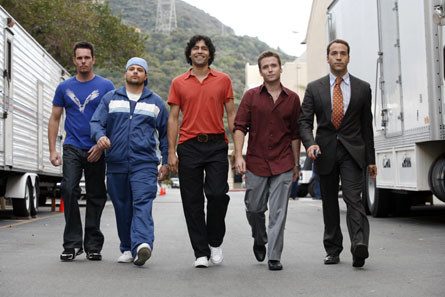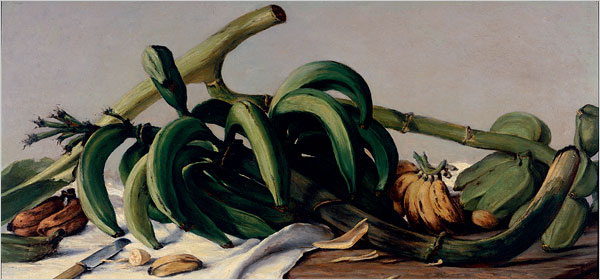 One of my most vivid memories from a visit to St. Petersburg, Russia, almost a decade ago is of walking into a ramshackle room in a tumbling old palace and seeing, as if they were ghosts, long-smocked artisans painstakingly copying old masterworks: eerily antique-looking men and women making giant decorative objects based on the art of the past.
One of my most vivid memories from a visit to St. Petersburg, Russia, almost a decade ago is of walking into a ramshackle room in a tumbling old palace and seeing, as if they were ghosts, long-smocked artisans painstakingly copying old masterworks: eerily antique-looking men and women making giant decorative objects based on the art of the past.
St. Petersburg is and always has been something of a museum city, hermetically sealed in its own royalist aesthetic. Even in the late 1990s, as the new thuggery of the ascendant Russian opportunist class was evident everywhere, the urge to re-create the glories of the past was also busily hammering away around every corner. By rebuilding with obsessive accuracy so much that the Germans had destroyed in the Siege of Leningrad, Petersburgers weren’t just taking their central city back to the glories of the days before World War II. They were replicating the age of the czars.
Is this art, or mummification? My guess is, yes and yes. It is what it is, for better and for worse, and in St. Petersburg, which like few other big European cities has resisted the hard edge of modernism (although it does have its share of Soviet Brutalist architecture) there was an abundance of each.
 The urge to retreat into the verities of the past is strong, especially when you’re not sure about the present or the future. The past in one sense is a popular commodity, with eager buyers looking for a patina of instant heritage and sellers willing to feed their nostalgic fantasies. So the art world has a furtive underground market in fakes (read Robertson Davies‘ sly and very good novel What’s Bred in the Bone for some sharp insights into the mind of a brilliant forger), and the American and English antique-furniture markets are in an uproar right now over purportedly fraudulent high-end pieces cobbled together (with exceptional skill, it must be admitted) from old pieces of semi-junk.
The urge to retreat into the verities of the past is strong, especially when you’re not sure about the present or the future. The past in one sense is a popular commodity, with eager buyers looking for a patina of instant heritage and sellers willing to feed their nostalgic fantasies. So the art world has a furtive underground market in fakes (read Robertson Davies‘ sly and very good novel What’s Bred in the Bone for some sharp insights into the mind of a brilliant forger), and the American and English antique-furniture markets are in an uproar right now over purportedly fraudulent high-end pieces cobbled together (with exceptional skill, it must be admitted) from old pieces of semi-junk.
An obsession with the past can also rise from uncertainty over our ability to make contemporary decisions. In its early years the only art in the collection of the Portland Art Museum was cast reproductions of ancient Greek and Roman statuary: Citizens of the pioneer city were invited into a sacred space to see knockoff versions of the foundations of Western art and accomplishment, as if the Renaissance and the Enlightenment, for instance, let alone the crude vigor of the American frontier, had simply never existed.
Yet it’s equally true that to ignore the past is to fundamentally misunderstand the present. What we are is built on everything that’s come before, and one of the objects of art is to explore that past in light of the present. That’s the great gift of a good museum. And it’s what makes Homage: Re-enactments, Copies and Tributes, which continues through Dec. 7 in The Art Gym at Marylhurst University, such an intriguing experience.
Curator Terri Hopkins built Homage around Sherrie Wolf‘s giant re-creation of Gustave Courbet‘s 1855 painting The Painter’s Studio: Allegory of Seven Years of My Artistic and Moral Life. It’s crucial that Courbet’s painting isn’t just any old Courbet. It’s a painting about painting, a lively and affecting treatise in oil on the nature and context of making art. And Hopkins has done with it the sort of thing good curators do: She’s surrounded it with other pieces that approach the same general question from different angles. To Wolf’s audacious act of reinvention she added a liberal smattering of photographer Christopher Rauschenberg‘s passionate pursuit of Eugene Atget‘s Paris, plus a pair of largely academic projects that, while they don’t add much to the visual pleasures of the exhibition, nimbly frame it and give it context.
Continue reading Remembrance of things past: Art that pays its respects










